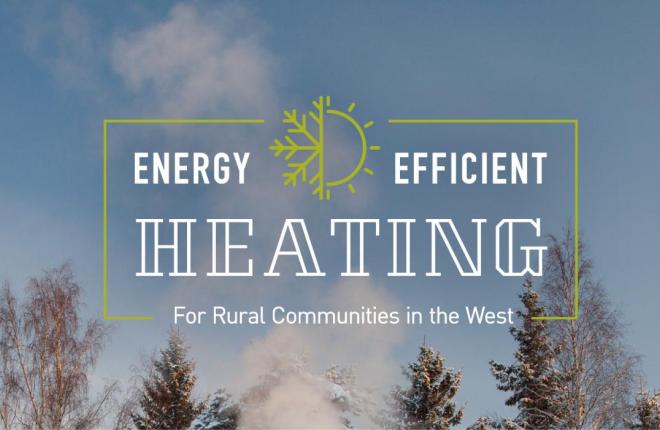
3/23/2021
Home Maintenance Checklist for Spring
Spring is a big time for cleaning and maintenance. In fact, there’s a reason it’s called “spring cleaning!” With spring finally here, most people are thinking about getting outside and taking advantage of the warmer weather, gardening, clean-up, and home maintenance.
A long list of to-dos may seem daunting, but a happy, healthy home requires regular home maintenance tasks that will keep you and your family comfortable in a safe and energy-efficient environment.
Before you begin your checklist, it’s a good idea to do a thorough walk-around of your property and home. A visual inspection of your home; the paint, windows, screens, vents, drainage, roof, etc. will help you identify any potential problems your home may have.
Many of the items on this spring maintenance checklist you can do yourself. But if you get stuck or find a task that’s a little over your head, contact local handymen and qualified contractors to assist.
14 Important Spring Home Maintenance Tasks
-
Change HVAC filters - It is a general rule of thumb to replace air filters in your HVAC system at least every 30 to 90 days, however, every system or situation may vary. The best source of information on how often you should change your air filters is in your HVAC system owner’s manual. Most recommend changing a standard filter about once a month, however, if you have pets, you might need to change them more often. Changing your HVAC filter often will help improve overall energy efficiency, cleaner air, and lower impact on your HVAC system.
-
Test your cooling system to make sure it’s working properly. Your cooling system will depend on where you live in the country, and what kind of cooling system you use. If you use a central air conditioning (AC) system, window AC unit or a swamp cooler, make sure it’s serviced and working properly before the warmer temperatures of summer arrive. Refer to the user manual for regular maintenance information.
-
Air Duct Inspection and Cleaning- If you suspect clogging, obstruction, vermin habitation, mold, or even just excessive dust buildup in your air duct system, having a professional do an inspection and cleaning is recommended. You may consider having your air ducts routinely cleaned, provided that the cleaning is necessary and done properly. Routine cleanings only have a positive impact on your air ducts, and evidence suggests that regular air duct cleaning will not cause excessive wear and tear on your ducts. The EPA does not recommend that the air ducts be cleaned routinely, but only as needed.
-
Fireplace, Chimney Cleaning - The National Fire Protection Association Standard 211 says, "Chimneys, fireplaces, and vents should be inspected at least once a year for soundness, freedom from deposits, and correct clearances.” Naturally, it makes sense to have your chimney cleaned after the winter season has ended, and Spring to early Fall is the perfect time to do this! Make sure to have your chimney screen cover checked to make sure birds and other wildlife are unable to get inside and make nests. If you don’t have one installed, get this done right away to avoid damages and potential problems down the road.
-
Gutter Cleaning - Gutter cleaning is an essential task for home maintenance. Having clean gutters prevents water damage, clogging concerns, and even pest infiltration. It is recommended that your gutters be cleaned at least twice a year. Depending on what sort of foliage you have near your home, you may want to clean once every three months. Regular gutter cleaning saves your home from damages that may occur during heavy rainfall seasons. Heavy rainfall with too much gutter debris creates a perfect storm for damage to your house’s fascia. Water may even begin to seep into crawl spaces, your foundation, or the basement of your home. Improperly sloped gutters that collect rainwater are also a breeding ground for pesky mosquitoes.
-
Lawn Equipment Inspection and Tune-up - Spring is the beginning of the gardening season! Make sure blades are sharpened, cords are free of fraying or damage, and oil is added to moving parts. Start-up and inspect all tools you plan on using to make sure everything is in tip-top shape and ready to go. If you use electric gardening tools, charge and check the batteries to make sure they are in good working order.
-
Pressure Wash Decks, Fences, and Siding - Pressure washing is essential to homes that experience mold growth. If you plan to re-stain your deck, pressure washing first will make for a better stain job in the long run. If you plan to power wash your siding, take caution to not damage your siding, windows, caulking, or allow any water to leak behind your panels. Rotting can occur if water seeps behind the siding panels, which can be highly damaging to the wood exterior.
-
Inspecting and/or Re-caulking Doors and Windows - Check all windows and doors for leaks and re-caulk or add new weatherstrips around doors and windows where necessary. Check the caulk on the outside window frame and the glazing around all of the panes. Exterior caulk can dry out in the heat of summer or the dry cold of winter and cause gaps and cracks which let air and water into your home.
-
Tree, Limb Trimming - Late winter or early spring is the best time to prune most shrubs and trees, but not all of them. Check with your local nursery or Farmer’s Almanac to see if you should wait or take precautions for trimming certain trees on your property. Trimming the trees in your yard creates a safe environment for your family and friends. Dead branches, diseased trees, and weak limbs are all a danger to people and property. When pruning trees, take a moment to assess if tree branches are too close or a threat to safety lights, electrical lines, or are blocking traffic and intersection views.
-
Water Heater Inspection - Don’t wait until your water heater breaks in the middle of the week and ends up with no hot water, or worse, a flooded basement! A water heater typically lasts between 8 and 12 years, but only if it is maintained properly. Regular water heater inspection is recommended every few months. Spring is a great time to have your water heater inspected or replaced to make sure it’s functioning as it should, not built up with sediment, or leaking. Attempting any repairs or inspections yourself can be dangerous if you’re not familiar with water heater maintenance, so it may be best to call a professional.
-
Sump Pump Inspection - It’s important to check your sump pump regularly to ensure it is working properly. It is recommended to do so every few months, and especially when spring approaches. Check the outside drain, clean the grate, and test the operation.
-
Cleaning, Replacing Dryer Vent Hoses - According to The Consumer Product Safety Commission ( CPSC ), there are tens of thousands of Dryer Fires annually, leading to many injuries or death, due to dryer exhaust duct fires. Cleaning or replacing your dryer hose once a year, and inspecting the vent and hose for any blockages at least every 6 months can help keep your home and family safe. While you’re at it, grab a lint brush and clean the dryer lint trap of any extra lint and debris.
-
Check, Test Smoke Alarms, Carbon Monoxide Detectors - beyond just spring maintenance, smoke detectors, fire alarms, and carbon monoxide detectors should be checked often and thoroughly to make sure they are in proper working order. Do a visual inspection to make sure your alarm indicator is on. This ensures that both your hard-wired and battery-operated alarm is properly connected and the batteries are working. Replace batteries once a year and test each detector at least twice a year. Make sure you have enough detectors in your home and in the right places. The National Fire Protection Association recommends homes should have smoke alarms installed inside every bedroom, outside each sleeping area, and on every level of the home, including the basement. So that means a 2 story, 3 bedroom house needs a minimum of five smoke alarms. It is also recommended to replace old detectors every 10 years, even if your devices seem to be working correctly. Newer model smoke alarms are more reliable than older models so consider upgrading when it’s time to replace your older model.
-
Replace Light Bulbs with Energy Efficient Bulbs - In with the new! Spring is a great time to lower the energy usage of your home lighting with new energy-efficient light bulbs. Want to learn more? Read Tips for Transitioning to LED Bulbs
Your local electric cooperative or public power district is a good resource to understand more about energy-efficient appliance options and technologies, and potentially help answer questions on contractors, financing, and incentives. Contact your co-op or public power district for more details.
Electrify and Save™
--
About Tri-State
Tri-State is a power supply cooperative, operating on a not-for-profit basis, serving electric distribution cooperatives and public power district member-owners in four states. Together with our members, we deliver reliable, affordable and responsible power to more than a million electricity consumers across nearly 200,000 square miles of the West. Visit www.tristate.coop.
Blog Posts

Protecting Your Home Year-Round from Wildfires

Summer Backpacking: Solar Power, Energy Efficiency, and the Best States to Visit

Beat the Chill: Effective Insulation Strategies for Winter Comfort

Energy Efficient Heating Options for Rural Communities in the West

Energy Efficient Tips for Outdoor Fall Entertaining

Boost Your Business with EV Charging

The Benefits of Having Your Own EV Charger at Home

Geothermal Heat Pumps: Harnessing Earth's Energy for Your Business

